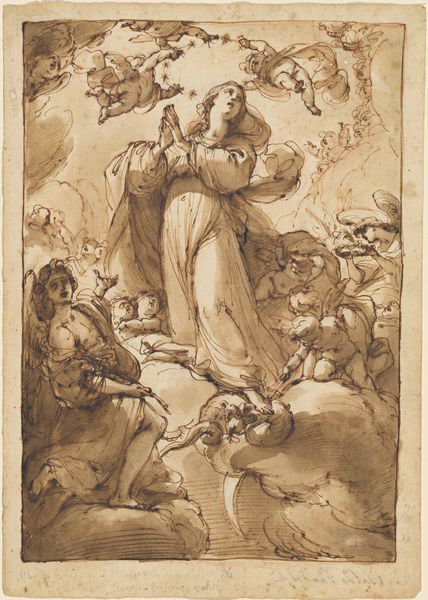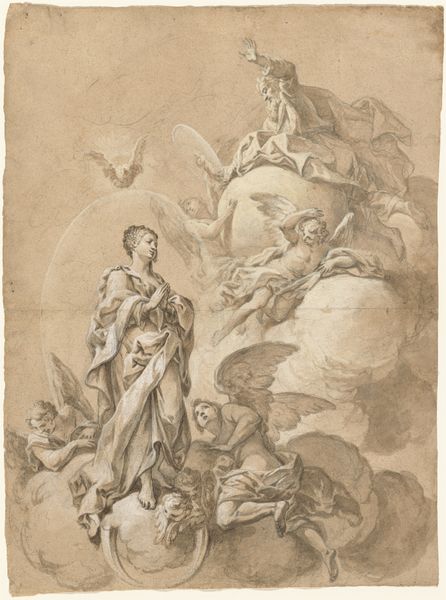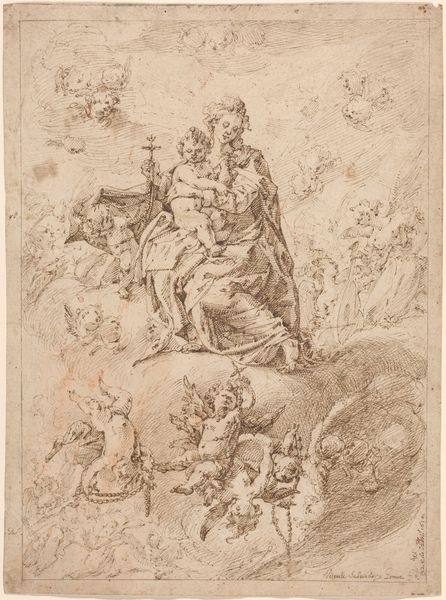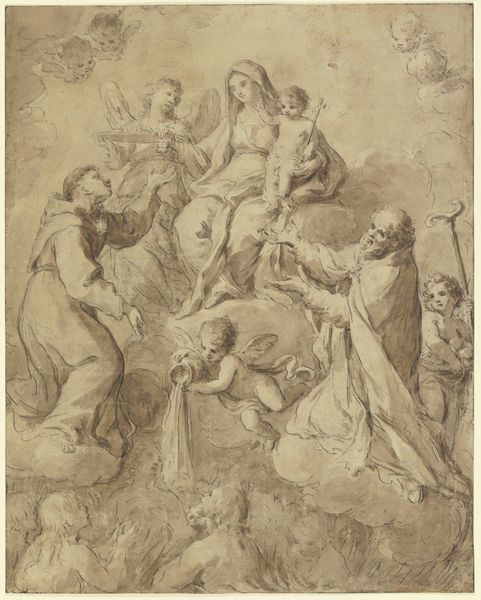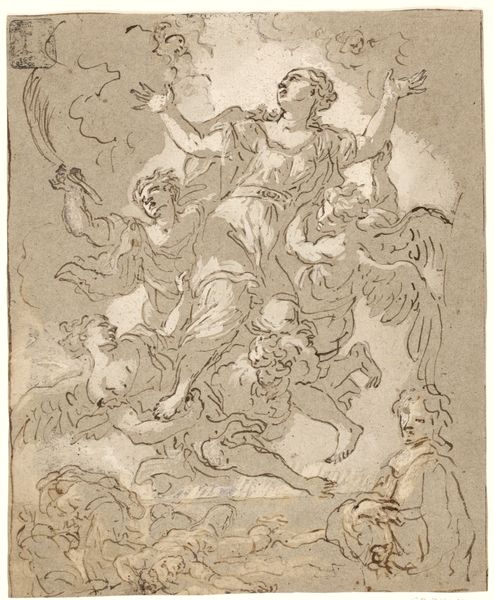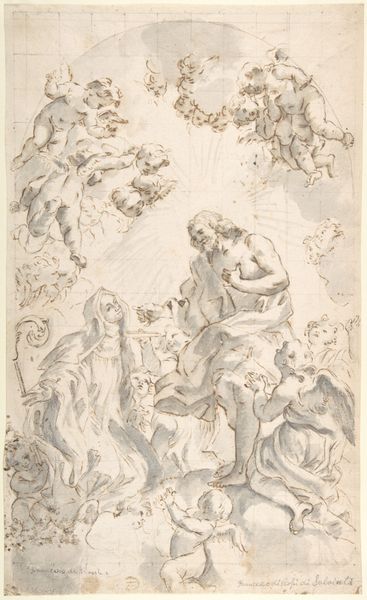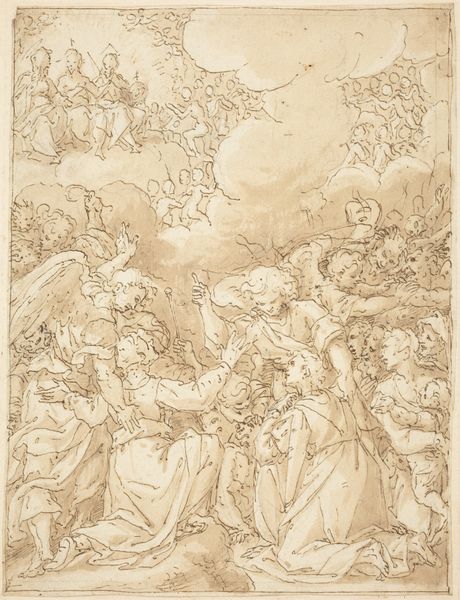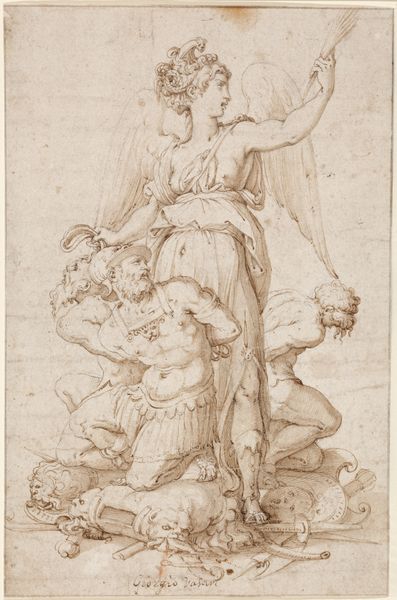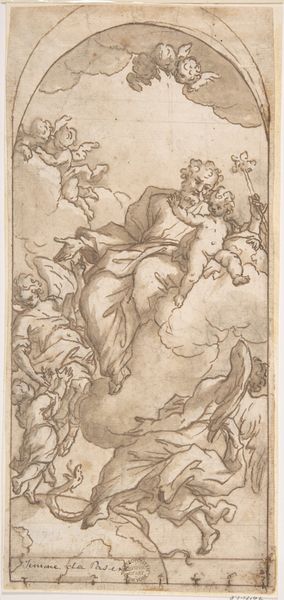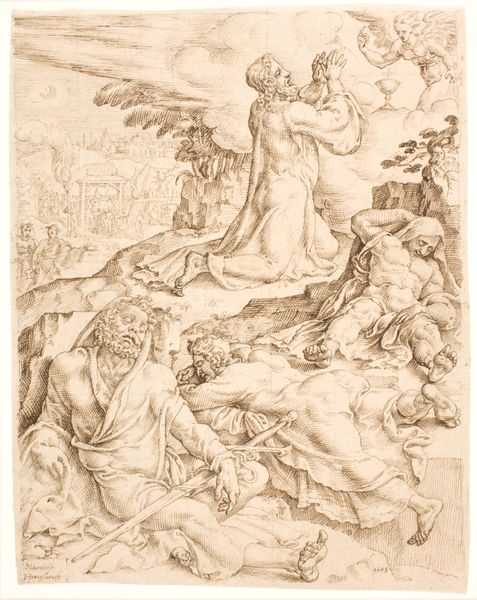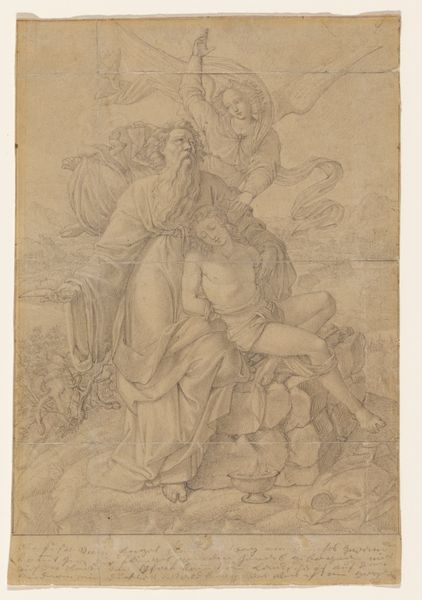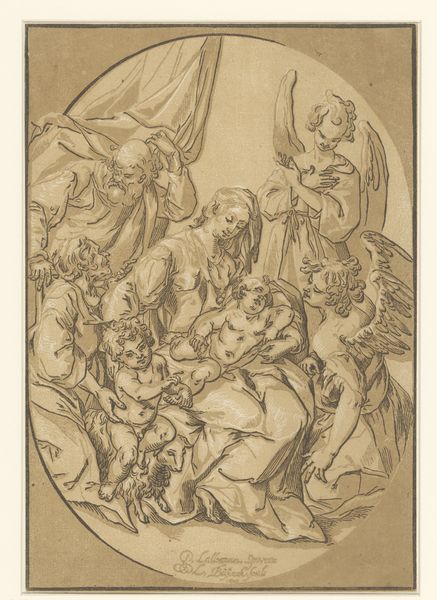
drawing, print, ink
#
drawing
# print
#
figuration
#
ink
#
history-painting
#
italian-renaissance
Dimensions: 10 5/16 x 8 1/16in. (26.2 x 20.5cm)
Copyright: Public Domain
Curator: This ink drawing, titled "Virgin in Glory with Angels" by Aurelio Lomi, was created between 1556 and 1622. Editor: The immediate feeling is one of soaring hope. There’s a lightness to the image despite the density of figures, like she is both anchored and lifted. Curator: Lomi's rendering uses a detailed linear technique and the ink suggests the preparation, or a study, for a larger, perhaps painted, altarpiece. You can see the evidence of his process; revisions in line, slightly hurried to catch movement. Editor: The Renaissance idealized women, often placing them within rigid societal and religious structures. Is this glory an earned state for the Virgin or something imposed upon her, by her family and then, in broader terms, the culture? She is an obviously maternal figure but her agency in all of this is what feels really important. Curator: The making of religious artworks in the late 16th and early 17th centuries was heavily supported by various organizations within the church, which would have maintained significant control over the subject and, of course, meaning. Editor: But then we must also account for the patrons who commissioned the pieces, what status and identity were they attempting to bolster? The very act of commissioning, in many ways, dictated and altered what religious expressions could be. I want to investigate Lomi’s position within this power dynamic. How was this image meant to impact faith? What did it say about power? Curator: And what choices did the artist, who might have felt constrained, make within these systems and for whom? It would be intriguing to delve into Lomi's biography. Where and how was he trained? With whom was he in discourse? Editor: Examining that exchange highlights that neither the production nor interpretation exists within a vacuum, which is really what resonates in the end. Curator: A fitting endpoint: we've moved from ink, paper, and the artist's hand to wider ideas of social position, and reception of art.
Comments
No comments
Be the first to comment and join the conversation on the ultimate creative platform.
